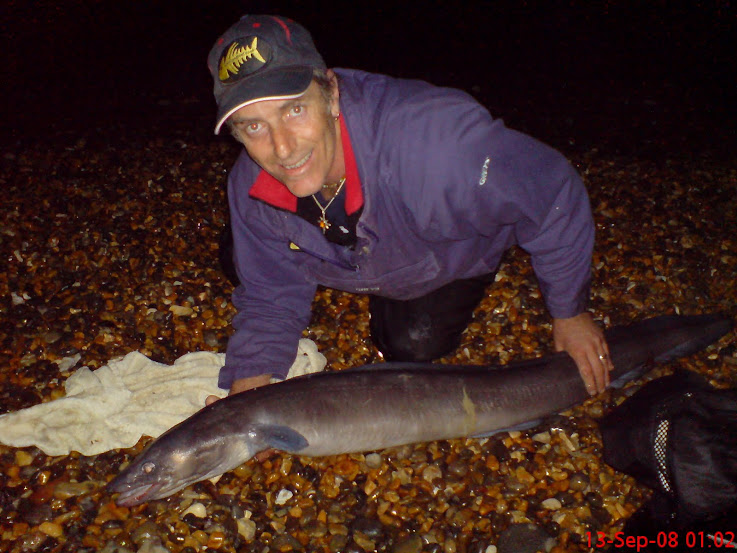Do Pennell rigs catch more fish?
The Pennell system of mounting two hooks has been around since Victorian times at least. Henry Cholmondeley-Pennell writes about the rig in The Book of the Pike, first published in 1865. (If you live beyond the shores of England, you may find it strange that Cholmondeley is pronounced Chumley. Not quite eccentric enough? Try this one. Featherstonehaugh, claimed to be the longest surname in England, is pronounced Fanshawe by folk perched high up the social ladder. The rest of us say Mate or Geezer.)
Anyway, Pennell rigs. While far from a one-rig-fits-all strategy, a pair of smaller hooks instead of one big one often makes a difference. Two advantages are better bait presentation and improved odds when you're not quite sure whether the next fish to turn up will be big or small, cod or flatfish. I'm not sure how important the second one is, since in my experience a tiny dab in determined mood has no trouble latching on to a 4/0. And at the other extreme, careful handling and good quality hooks shouldn't lose you a 20lb cod on a size 1 Aberdeen.
 There is a widespread belief among match and pleasure anglers alike that fish sometimes prefer to attack the top or the bottom of a column of bait. The theory seems to hold a certain amount of water. One session you catch most fish on the top hook, while on the next trip almost everything hits the bottom hook. When decent cod or bass are on the prowl and feeding hard, they just swallow the lot.
There is a widespread belief among match and pleasure anglers alike that fish sometimes prefer to attack the top or the bottom of a column of bait. The theory seems to hold a certain amount of water. One session you catch most fish on the top hook, while on the next trip almost everything hits the bottom hook. When decent cod or bass are on the prowl and feeding hard, they just swallow the lot. Coming at it from another point of view, the logic would then be that if you use a conventional single hook on a day when fish are hitting the top of the bait column, you'd suffer a string of missed bites. Whereas if they were hitting the bottom end, you'd bag up. Maybe that explains sessions when I can't make contact with perfectly good bites. This is getting a bit deep, so on with the practicalities.
The original design uses two fixed hooks with bait spread between. A more flexible approach for beach fishing is to let the top hook "float" on the snood. I make Pennells by first fixing a leger stop or crimp on the snood. If it's a crimp, I add a bead. The top hook goes on next, simply threaded through the eye so that it can run up and down the line. The bottom hook is tied in normal fashion.
Set the leger stop or crimp to match the bait - about 100mm up the snood for lugworms. Thread the worms on, allowing them to push the floating hook up to the bait stop. Lay this top hook alongside the top of the worm column. Wrap the worms and the snood around the shank three or four times to lock the column so that the bait does not slide back to the bottom hook. The leger stop or crimp is still necessary because it resists baits sliding up the snood when you cast hard.

No comments:
Post a Comment